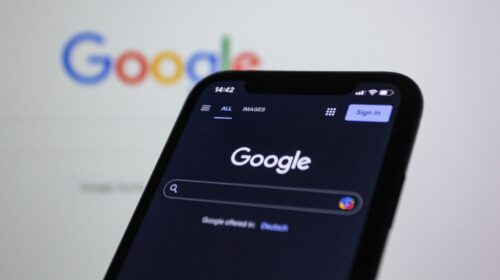Aesthetics alter a user’s perception of a website, which can evoke a wide range of emotions and attitudes. These emotions and perceptions impact the user’s attitude towards the website’s content, advertised products, company, credibility and site usability.
The design and presentation of a website is strongly visual, and users are known to make judgments of a site’s aesthetics very quickly. As the website likeability and credibility increases so does the likelihood of purchasing from the site. Since the site’s aesthetics can influence brand perception and credibility, the importance of design and color treatments must be considered.
Research by Khuang, et al., (2001) and Park and Jung (2001) demonstrated that emotion can increase the value of physical products such as houses and cars. Emotion can also influence a user’s memories of products and their purchasing decision processes (Kim, Lee & Choi, 2002). The history of traditional media’s use of emotions to build brand equity and loyal customers is well known. Marketers know that their most loyal customers are those with an emotional connection to their brand.
Defining Aesthetics and Emotion
Aesthetics is commonly known as the study of the mind and emotions in relation to the sense of beauty. More broadly, scholars in the field define aesthetics as a critical reflection on art, culture and nature. Aesthetics deals with notions such as the beautiful, the ugly, the sublime, or the comic, as applicable to the fine arts.
Aesthetic judgments involve many issues. They can be culturally conditioned, linked to emotions, and at least partly intellectual and interpretative. It is difficult to measure the relationship between aesthetics and emotions because of their abstract nature and creating a metric for aesthetics has been difficult.
Cognitively, it is unclear whether the concept of beauty is due to pre-attentive processing or to cognitive judgments. Pre-attentive processing is the awareness of an item before the person thinks about or focuses any real attention on the item (i.e., awareness preceding user’s focused attention). Cognitive judgments are evaluations of an item based on a person’s previous experiences with other similar items. The resulting judgments may have nothing to do with the item (i.e., user’s current evaluation is based on previous experience).
Users make judgments of the visual appearance of a website very quickly and those judgments are very consistent over time. Lindgaard, et al., (2006) found that website impressions were reliably formed within 50 seconds, were reliably consistent between people, and were held consistent over time.
Lindgaard asked participants to view 100 websites presented in a randomized order and then to rate each site for visual appeal. Lindgaard had the participants view and rate the same 100 sites in two separate sessions. Participants viewed each page for 50 seconds and then rated the visual appeal of the page.
Results showed that the participants’ rating scores were highly correlated between sessions. That is, participants’ visual appeal ratings were reliably consistent across both sessions. Since impressions were made in a short exposure time (less than a minute/page), it is likely that participants were making aesthetic judgments with minimal information and little conscious reflection or thought.
Effects of User Motivation and Interest
Consumer product involvement is widely recognized as an important variable that is taken into consideration in advertising. This product involvement influences the buyers/user’s decisions and information-seeking processes (Dahl, Rasch, & Rosengren, 2003). Successful website design is influenced by the product type and the viewer’s motivation level.
The type of product a viewer is interested in influences the type of information-gathering processes the individual uses. High-involvement products are subject to a large amount of information-seeking and conscious, rational decisions. For example, a car is an example of high-involvement because of its high cost, high utility, and the number of similar models that are available. Buyers will research the cars of interest and take a long time to make a decision.
Low-involvement products are usually inexpressive products characterized by affective purchase motives, for example, gum. Gum is inexpensive, has low utility, and little differentiation within the market. The buyer spends little time researching gum and will use gut feelings toward the brand of choice.
The Elaboration Likelihood Model of persuasion describes how a consumer’s interest level affects message elaboration and brand perception. The model suggests that consumers engage in one of two decision-making routes, either low- or highly-motivation.
Differences in preference for low- vs. highly-motivated users suggest that websites should address the motivation and interest levels of their users. Highly-motivated individuals will evaluate the information content of a product using a rational, conscious approach (Dahl, Rasch, & Rosengren, 2003).
Low-motivated individuals will pay less attention to the core informational content and are swayed by peripheral cues such as the quantity of information. Kang and Kim (2006) demonstrated that the quantity of content was an indicator of informativeness only for low-interest individuals. The low-interest users considered entertainment and informativeness as equally important. Whereas, the high-interest individuals did not compare informativeness to entertainment.
Aesthetics may be less important for high-interest than for low-interest individuals. Emotion type would also differ. Low-interest individuals would favor a heuristic, ‘feel good’ website while high-interest individuals would favor a site that stimulates positive emotions only after rational consideration.
Website Complexity
The complexity and amount of information presented on a website can influence the effectiveness of the site’s communication and the user’s perceptions of the site. Too much content or too little content can drive users away.
Berlyne (1960) described complexity as “the amount of variety or diversity in a stimulus pattern.” Complexity increases with the number of distinguishable elements, how dissimilar the elements are, and the number of elements that do not appear as a unit.
A medium level of complexity affords optimal communication effectiveness (Geissler, Zinkhan, & Watson, 2006). Low to moderate complexity facilitates feelings of pleasantness whereas high complexity stimulates feelings of interest (Stevenson, Bruner, & Kumar, 2000).
Stevenson, et al., (2000) asked participants to rate websites varying in complexity by:
- Attitude toward the commercial
- Attitude toward the company
- Purchase intention
- Attitude toward the website
Participants rated complex sites low in attitudes toward the commercial, company, and the site, and also purchase intention. It seems that visual complexity affects the viewer’s attitude toward the company, advertisement and website, and whether they will purchase an item.
The primary elements that web designers use to communicate with users include home page length, graphics, links, text, and animation. Geissler, et al., (2006) demonstrated that home page length, number of graphics and links, amount of text, and use of animation impacted perceptions of complexity.
Perceptions of Credibility
Website design influences perceptions of trust, and lack of trust has been shown to impact online sales. Karvonen (2000) reported that Internet users admit to making intuitive, emotional, on-the-spot judgments when shopping online based on perceptions of the merchant’s website.
Research by Kim and Moon (1998) demonstrated that clipart and overall color layout impacted website trustworthiness. They found that three-dimensional, dynamic pastel colored clipart covering at least half the screen enhanced trustworthiness.
Karvonen and Parkkinen (2001) suggest that using high-quality, well-chosen photographs generate consumer confidence.
Photographs of people can induce trustworthiness by adding a ‘human touch’ but viewers with pre-existing low levels of general trust may see these as a manipulative ploy.
Geissler, et al., (2006) found that both web designers and web user focus groups agreed that a website appeared incomplete and less credible and less complex if the site did not provide information about who they are, what they did, and a way to contact them.
Other variables impacting perceptions of credibility include the following research results:
- Lightner (2003) found that overuse of graphics damages perceptions of professionalism.
- Wang & Emurian (2005) found that simplicity and consistency facilitate accessibility and navigation and these are characteristics of a trustworthy site.
- Flanagin & Metzger (2007) found that offering information and news relevant to advertised products may enhance perceptions of credibility.
The Impact of Usability on Aesthetics
Social psychology has shown that physical attractiveness is associated with a wide range of socially desirable characteristics. Perceptions of usability are also affected by perceptions of aesthetics.
Unfortunately, research has demonstrated mixed results for the relationship between perceptions of aesthetics and usability. Tractinsky et al., (2000) found that post-use perceptions of both aesthetics and usability were affected by pre-use perceptions of aesthetics.
Thorin and Mahike (2007) found that although aesthetics had a main effect on emotional valence and physiological arousal, there was no interaction between usability and aesthetics. But they did find that usability is more important than aesthetics when comparing satisfaction ratings for the use of product.
Conclusion
A user’s perception of a website can evoke a wide range of emotions and attitudes. There is no question that aesthetics can influence important factors related to online purchasing decisions such as attitude toward the company, credibility, and motivation. Emotion has played an important role in capturing and keeping the public’s attention in traditional marketing, and it will continue to play an important role for online companies that want to build a personable and trustworthy face on the internet.
Written By: Jennifer Chen
Posted By: CueCamp


